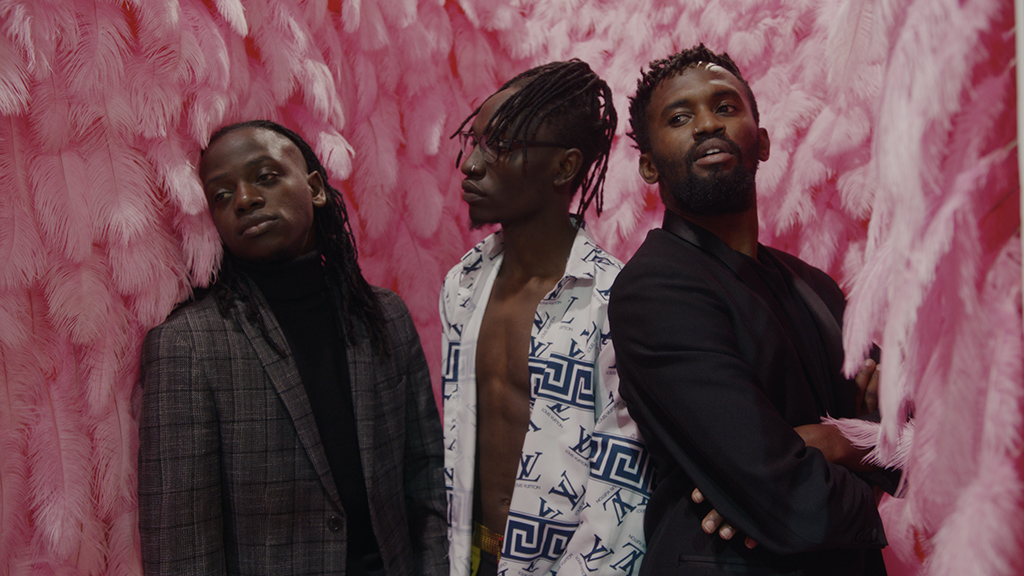Vladimir Dvorkin was a prolific artist who painted thousands of beautiful portraits during his lifetime. One wouldn’t know it, however, from gallery catalogues, exhibition reviews, or Google searches. One wouldn’t even know of him by looking at signatures on paintings made by his own hand, for Dvorkin was a ghost painter. For years, the Russian-born artist painted portraits that he sold to Israeli “artist” Oz Almog, who proudly re-sold and exhibited the works as his own. This story haunts Dvorkin’s grandson, Roman Lapshin, who vows to expose the truth and give his late grandfather the recognition he never enjoyed during his lifetime. Portrayal chronicles this quest through a thrilling cat and mouse caper about the ethics of artistry and the puzzles of authorship.
Director Billie Mintz accomplishes a fine stroke of portraiture on his own while telling this story. On one hand, Portrayal captures the strain of this lie on Roman. The young man obviously obsesses about the legacy his grandfather was denied. Paintings by Dvorkin adorn the family home and glimpses of the portraits with which Almog made his reputation can be seen in old home movies and photographs taken by Roman’s grandparents. Roman’s grandmother explains that one caveat of her late husband’s deal with Almog was that he could not photograph the artwork. Shrewdly enough, Roman realises that his grandfather simply captured them incidentally while documenting his family’s everyday life. The proof of Almog’s lie is very strong and Roman plans to confront the monster he’s feared for much of his adult life.
On the other hand is Mintz’s portrait of Almog. Portrayal takes a two-pronged approach to the story as Mintz offers footage taken with Almog under the guise that he was simply making a documentary about the artist’s life and work. Almog is a delicious character with a huge ego and a big mouth. He loves to boast about himself and revel in his work, but he’s also incredibly dismissive of some of the creations. At no point during the proceedings does Mintz let on to Almog that he knows the big secret. He respects Roman’s desire to confront the man and instead captures one bald-faced lie after another. Almog serves the film even better by sharing his philosophy about the responsibility of artists. He says that artists are entitled to create beautiful work; if someone gets hurt in the process, so be it.
Portrayal has a fascinating premise as Roman becomes determined to let Almog die by his own sword. The film explores the complicated family dynamics as Roman’s mother, grandmother, and relatives have wildly different views about opening this controversy. Some feel that Dvorkin was cheated and exploited, while others note that he participated in a contract for which he was compensated. Mintz shoots many of these conversations in a style that’s become his signature, particularly after Jesus Town, USA. Conversations in Portrayal unfold as they would in dramatic films with proper shot/reverse shot dynamics and extensive coverage of scenes. These two traits aren’t normally feasible for conventional documentaries outside of extensive multi-camera shoots (unless one’s fine having cameras in the shots), but particularly one conversation between Roman and his uncle, which plays out in pieces throughout the film, effectively uses a dramatic delivery. This approach builds tension and emotion as Portrayal approaches the fateful confrontation and Roman begins to doubt his assessment of the situation and, particularly, Almog’s character.
Roman makes the flight to Vienna with plans to challenge his antagonist after Mintz informs him about a new development he discovered while interviewing Almog. He plans to burn the full catalogue of Dvorkin’s portraits and make some grand artistic statement, which, inevitably, has traumatizing overtones for Roman and his Jewish family. (Many of Dvorkin’s portraits, moreover, are of famous Jews.) The quest to expose the truth becomes more urgent and the stakes become even higher as Portrayal considers the ethics of ownership, provenance, and art’s ability to preserve the past.
However, Roman’s trip to Vienna plays out in March 2020. This timing makes Portrayal one of the more novel additions to the world of coronavirus documentaries as Roman and his girlfriend feverishly weigh the need to confront Almog against the necessity of returning home before the borders close. Mintz’s fine piece of portraiture, however, illustrates that there’s more than one way to catch a thief.
Portrayal screens at Hot Docs 2021.











